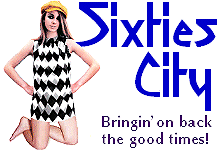

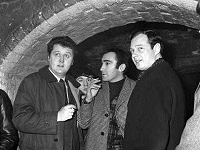
 |

|
 |
![]() The Mersey Sound Takes a Grip
The Mersey Sound Takes a Grip
While
The Beatles continued to 'wow' crowds in The Cavern, and then the rest of the
country, more and more new bands began to grace the Cavern stage. Cilla Black,
real name Priscilla White, was a former office typist who would wander down
to The Cavern at lunch times to watch the bands perform. She was such a regular
sight at the club that she was offered a job as the club's cloakroom attendant.
At times, after the afternoon sessions, she would jokingly sing along to the
bands rehearsing on the stage. She was actually very good and was, from then
on, always egged on by the bands to get up on the stage and sing at an actual
session.
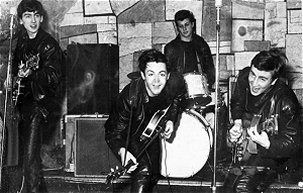 The Beatles rock The Cavern 1962 |
The
music scene in Liverpool was a thriving one - in 1960 there were over 400
bands performing in the city, many of whom would go on to achieve worldwide
fame while others would fade away into obscurity. Of the most successful of these bands, The Swinging Blue Jeans, The Big Three and The Searchers were all enjoying success at the club, but it was Gerry and The Pacemakers who were the most notable opposition to The Beatles' stranglehold on the club. The band made many appearances with The Beatles at The Cavern and, at one point, Gerry Marsden himself actually joined The Beatles, for one night only, as a stand-in for John Lennon! This 'helping out' in each other's bands wasn't too uncommon at The Cavern and, in fact, this great camaraderie amongst the groups at the club was said to be the essence of the whole Mersey beat scene. During a lunchtime session on 9th November 1961, 27 year old record-store owner Brian Epstein visited The Beatles. The more well-known and popularly-believed story of Brian's first meeting with The Beatles is that Brian Epstein had searched to find more information about the group following a fan's request for the German-released single ‘My Bonnie’ at his shop and discovered that the band were, in fact, from Liverpool and regularly played at the nearby Cavern club. This is a story that has been told and re-told over the years, but is somewhat of an 'urban legend' and not the complete truth. Brian Epstein was a very methodical man with a flair for promotion in business and acutely aware of his surroundings. |
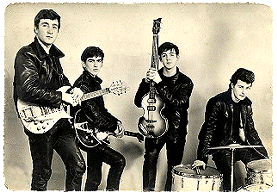 Promotional postcard picture |
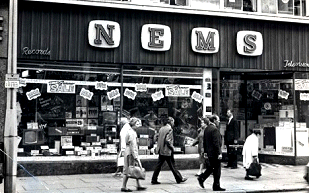 |
A
visit to Liverpool and the site of the original Epstein record shop called
N.E.M.S. (now a branch of the Anne Summers chain of shops) makes it quite
clear as to just how close his shop was to The Cavern - a mere three minutes
walk! During the week hundreds of teenagers would come into his shop to
listen to records - some people even bought them! During the early years of the record retail market there were soundproof booths inside shops where you could listen to the recordings before you purchased your copy. Many teenagers, including The Beatles and many members of the other local bands would do so, writing down the lyrics and remembering the tunes for later transfer to their own guitars. The talk in the shop from these young teenagers was all about The Cavern, usually being the next stop for them every weekday lunchtime. Brian Epstein also wrote for a local Music paper called 'Mersey Beat', whose pages contained articles about The Beatles in Hamburg as well as record reviews penned by Brian himself. He also sold the 'Mersey Beat' newspaper at his N.E.M.S. shop, so it is ludicrous to believe that he never read his own print and therefore must have seen the name and pictures of The Beatles alongside his own. It is widely reported and common knowledge that Brian Epstein was a homosexual which, in the 1960s, was an illegal offence punishable by a severe term of imprisonment. It has also been reported that Brian’s particular leanings were towards the more 'rough' type of male companion. Although many parents would have found the area around The Cavern quite rough and maybe even frightening, to Brian it added to its charm. |
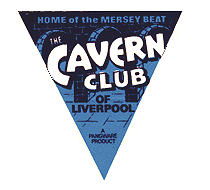 |
Although
The Beatles had left forever, The Cavern's loyal crowds would not be disappointed
by those who were to follow in the footsteps of their heroes. The Cavern's
exposure during The Beatles' reign had elevated the club to legendary status
and was soon to be frequented by the century's most famous musicians. The
club even had its own radio show on Radio Luxembourg! It also had its own
recording studio and record label called ‘Cavern Sound Recording’ - a very
low-key affair. 2,500 copies of the first single were pressed but by 1965
it was running into debt, as was the club itself. January 24th 1964 was the date that Blues hit The Cavern in the shape of the legendary 'Yardbirds'. Surprisingly, at the end of their set, the band was awarded with a fairly damp response from the audience. This was probably due to the crowd's uneducated ear towards the sound of R&B but, regardless, the band's lead guitarist Eric Clapton would return to the club a year later to a much more appreciative reception. A young 'Rolling Stones' played their Cavern debut on November 5th, a gig which was a success and noted by Bill Wyman in his autobiography. Others who played The Cavern that year included John Lee Hooker, Howlin' Wolf, John Mayall's Blues Breakers and Memphis Slim. By 1965 The Cavern had probably reached its pinnacle and was starting to suffer financially (desperately in need of major refurbishment) but, nevertheless, great acts continued to be drawn to the club. The line-up for 31st March read like this: Gene Vincent, Sandie Shaw, Petula Clark, Manfred Mann, The Kinks and The Clayton Squares. Possibly topping even that, on 31st October, 'The Who' played The Cavern for their first and only time. The gig was apparently one of the best the club had ever seen. |
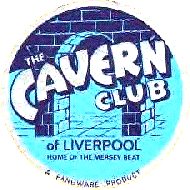 |

|
|
All
Original Material Copyright SixtiesCity
Other individual owner copyrights may apply to Photographic Images |